Major Companies That Are Surprisingly About to Go Out of Business

With the monster growth of e-commerce in the last decade, the United States has become oversaturated with retail options. Some surprising retail bankruptcies have already occurred in the last two years, and even more companies are expected to go belly up in 2020.
With retail liquidations at an all-time high, you might be surprised to learn which of your favorite retailers plan to close up shop next. Many of the businesses on this list may seem to be doing fine on the surface, but bankruptcy filings and closing procedures are well underway behind the scenes. Here’s the list of retailers you may have to say goodbye to soon.
J.Crew
Due to falling sales, J.Crew plans to close some of its retail stores. This favorite of former First Lady Michelle Obama has already closed its bridal store. The retailer has also parted ways with its creative director, Jenna Lyons, and its chief executive officer, Millard Drexler. Drexler believed the company’s lackluster sales were due to the company raising its prices at a time when consumers were becoming thriftier.

Instead, J.Crew failed to adapt appropriately, raising prices and attempting to expand. Former West Elm President Jim Brett succeeded Drexler in the position he had held 14 years. The company was offered a debt exchange in 2018 that offered some relief from the $2 billion debt.
Sears Holdings
Sears has been struggling for at least a decade. As sales continued to decline, the company cut costs, sold assets, closed stores and laid off hundreds of employees. Despite these efforts, the retail giant was not able to avoid bankruptcy. In October of 2018, Sears Holdings filed for Chapter 11 bankruptcy and closed 142 retail stores.

CEO Eddie Lampert’s hedge fund loaned the company hundreds of millions of dollars to try and stave off bankruptcy. Unfortunately, even the hedge fund wasn’t enough to keep this storied retailer afloat. Oversaturation, land prices, overhead costs and online retail sales all played key roles in the downward spiral.
99 Cents Only
Discount goods retailer 99 Cents Only has been under a lot of financial stress due to strong competition from companies like Dollar Tree, Dollar General and Walmart. The company recently reported a loss of $271.1 million in 2017, with $33.6 million in losses during the second quarter alone.

In recent years, the 35-year-old company has tried to make some big changes. It’s now owned by Ares Management and CPP Investment Board. Jack Sinclair replaced Geoffrey Covert as CEO in 2015. Although sales have improved, the company is still losing money.
GNC
Despite top-line revenue of roughly $2.5 billion for the year, widely recognized supplement supplier GNC lost 3.4% of its revenue and has $1.3 billion in debt. GNC’s chief executive officer said the company is doing well in e-commerce sales as well as in China.

Apparently, that’s not enough to counteract declining sales domestically, and the company plans to sell 40% of the company to a pharma company based out of China. The Chinese company will sell, market, distribute and manufacture GNC products in China. GNC’s recent decline is likely due to increasing e-commerce competition and lower mall traffic.
Fred’s Pharmacy
Fred’s Pharmacy has been a pharmacy staple for 70 years. The company recently reported that top-line sales fell 4.3% for a net loss of $139.3 million. Fred’s previously had 600 locations and planned to operate 1,000, but those plans fell through when Walgreens backed out of a joint deal with Rite Aid that would have divided acquired Rite Aid stores between the two.
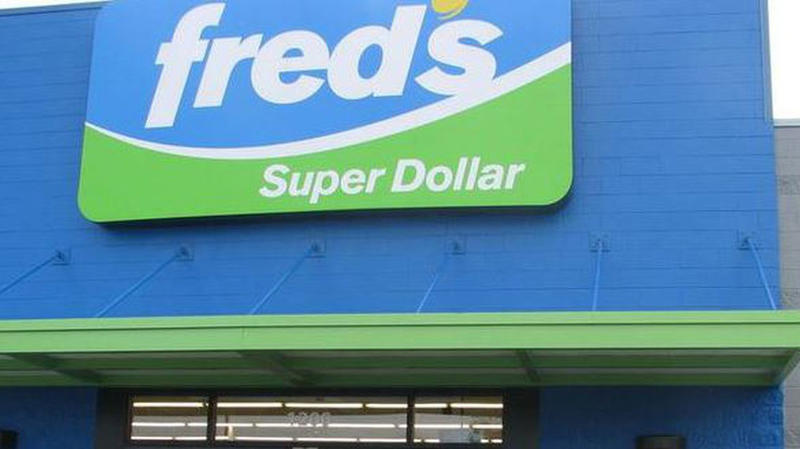
After those plans failed to materialize, Fred’s Pharmacy’s chief executive officer left in 2018, and a former media executive soon joined Fred’s as the new CEO. Fred’s recently sold its specialty pharmacy division to CVS for $40 million, and now all its pharmacies are for sale.
Destination Maternity
Destination Maternity is a maternity apparel giant with more than 1,000 stores. Last year, the company’s sales fell by more than 7%. The company’s CEO left in 2018, and the company started working with its second interim CEO to turn things around. To help with those efforts, Destination Maternity hired Berkeley Research Group.

It was later revealed that Destination Maternity’s severed relationship with Kohl’s was a chief cause of the income loss. The maternity retailer’s revenue fell 6.3% year-over-year, down to $406.2 million. One beacon of hope for the chain is a 40% jump in e-commerce sales.
Ascena Retail
Ascena is the umbrella company for once popular mall retailers Dress Barn, Ann Taylor, LOFT and Lou & Grey. Even after the company brought in a new chief executive for Dress Barn, things have not improved for the retail chain. In an attempt to save the brand, Dress Barn will close 25% of its doors by the end of 2019.
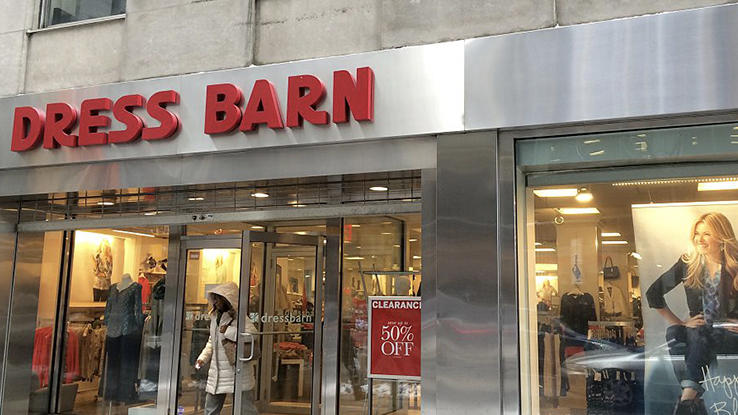
Ascena saw $1.7 billion in sales last year. Despite falling sales year-over-year, Moody’s financial services company said Ascena is on a good path to recover from those falling sales. The company hopes to keep store locations open on a smaller scale moving forward to return to profitability.
Stein Mart
Stein Mart has a spark of hope after years of recent struggles. The discount department store based in Jacksonville has seen its sales start to stabilize, with digital sales growing by 47%. The company still reported net losses of $23.4 million last year, but the loss was 10% less than the previous year, so the future isn’t quite as bleak.
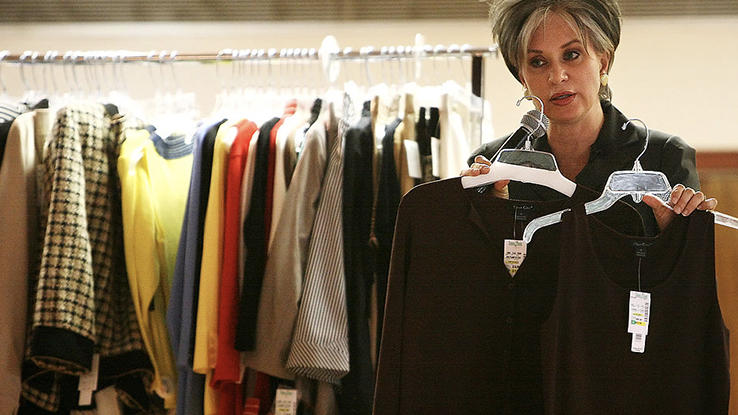
At the start of the year, Stein Mart announced it had hired a team of advisors to help boost the chain. The company also secured a $50 million loan that can be increased, if necessary.
JCPenney
Although things are still looking grim for the department store chain, JCPenney has still managed to keep its head above water, unlike former chief competitor Sears, which laid off 1,000 employees and sold its distribution center in 2018. In contrast, JCPenney has been hard at work trying to turn things around.
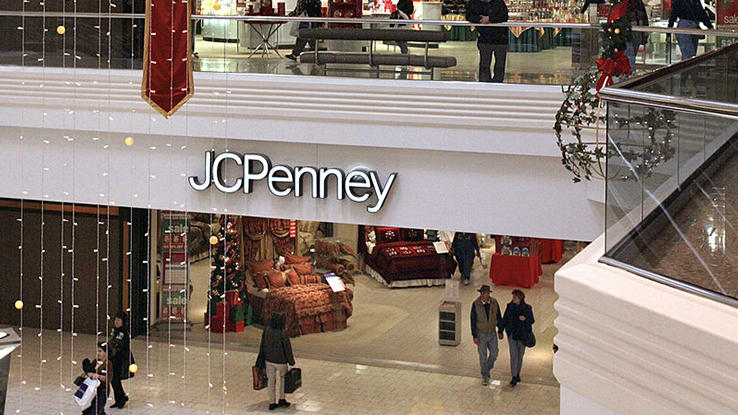
One key roadblock for the company is the $4.2 billion in debt, and investors are starting to lose their patience. Recent changes for the company include the departure of CEO Marvin Ellison, who left his leadership position in 2018 to head up the home improvement powerhouse Lowe’s.
Office Depot
With sales falling 7% to $10.2 billion in 2017, office supply retailer Office Depot is no stranger to hard times in recent years. Chief Executive Officer Gerry Smith announced that Office Depot would shift to providing a line of services in addition to retail sales in an effort to increase the company’s top line.

Office Depot’s new services plan includes its business-to-business box subscription service known as “BizBox.” The subscription program has more services than products. To further the company’s investments in service, it acquired the IT firm CompuCom. Services now account for 14% of Office Depot’s revenues.
The Vitamin Shoppe
This nutritional supplement retailer has had a similar struggle as GNC in recent years. The company hopes to solve its problem of declining sales and lower foot traffic by focusing more efforts on e-commerce and subscription services. Despite the company’s efforts, sales fell 8.5% to around $1.2 billion in 2017.

The company’s declining sales have been attributed to declining mall traffic and increasing competition from other supplement stores and online retailers. The Vitamin Shoppe has plans to implement category expansion, delivery services, subscriptions and events to boost sales. E-commerce will also see a big push by executives in the coming year.
Forever 21
Discount, fast-fashion retailer Forever 21 filed for bankruptcy on September 29, 2019. After filing for Chapter 11 protection, Linda Chang, the company’s Executive Vice President, announced that Forever 21 will close 350 stores around the world and cease operations completely in 40 countries.

Luckily for Forever 21 fans, a large number of Forever 21 stores will remain open in the United States — for now. High performing stores in strong retail markets will obviously not close. The Chapter 11 bankruptcy announcement came shortly after the company hired advisers to refinance, seek private-equity support and restructure the company.
Neiman Marcus
Neiman Marcus saw sales drop 5% to $4.7 billion in 2017. The luxury clothing retailer tried a few strategies to turn things around, but the company’s efforts haven’t improved the outlook. Strategies included eliminating 200 jobs and developing a “Digital First” customer engagement plan to boost sales.

Earlier this year, Canadian company Hudson’s Bay expressed interest in buying the luxury retailer. However, when the companies were in negotiations, the deal fell through due to concerns over Neiman Marcus’ falling sales. The declining popularity of malls has been cited as one of the main reasons for the decline. Operating and interest costs are also high.
Bebe
Bebe has been struggling since the company’s founders experienced marital problems. The company’s founder, Manny Mashouf, started Bebe in 1979, and his ex-wife, Neda Mashouf, served as creative director. In 2007, Neda divorced Mashouf and left the company. Declining mall sales and other retail challenges also played a role in falling traffic and sales at Bebe.
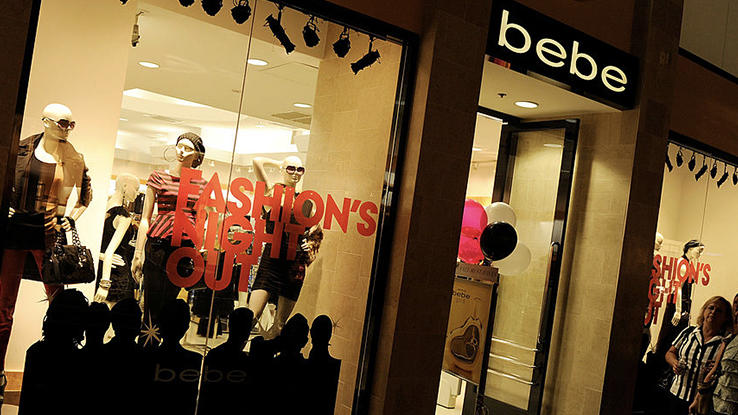
Bebe saw a $4.6 million operating loss in 2017. To stay afloat, the company decided to shift away from traditional brick and mortar retail stores. Bebe has now moved to a fully e-commerce business, paying $65 million to close all the company’s physical retail stores.
Pier 1 Imports
Pier 1 has had a tough time in recent years. In 2018, the home goods retailer tried to curb falling sales by enforcing a strategy that focuses on marketing, sourcing, merchandising, e-commerce and supply chain. Net sales for Pier 1 fell by 9.2% in 2018 to $371.9 million.

Global analysts for S&P also downgraded Pier 1 Import’s credit rating, which was a big financial blow for the retailer. President Trump’s 10% tariff on Chinese goods also took a toll on Pier 1. Leadership disclosed in a statement that roughly 60% of the company’s goods are made in China. Pier 1 is currently working on new strategies to stay afloat.
Lands’ End
Lands’ End offers clothing, luggage and home furnishings, but it seems to be having trouble resonating with consumers. The company’s former association with Sears may have been a potential cause, but the company branched off in 2013. The company has enjoyed strong catalog sales, but it made some critical errors in recent years.

Lands’ End former CEO Federica Marchionni tried to boost sales by launching a youthful clothing brand aimed at trendy, fashion-forward consumers. Called Canvas, the brand failed to capture the desired core clientele and launched with little success. This failure, along with poor online and in-store sales at Lands’ End, are primarily to blame for the retailer’s decline.
Guitar Center
Music supplier Guitar Center has had about a year to refinance the company’s $900 million debt. Although the company has been in business for more than 50 years, its continued existence is threatened by declining electric guitar sales. From 2005 to 2016, the company saw electric guitar sales drop 36%.
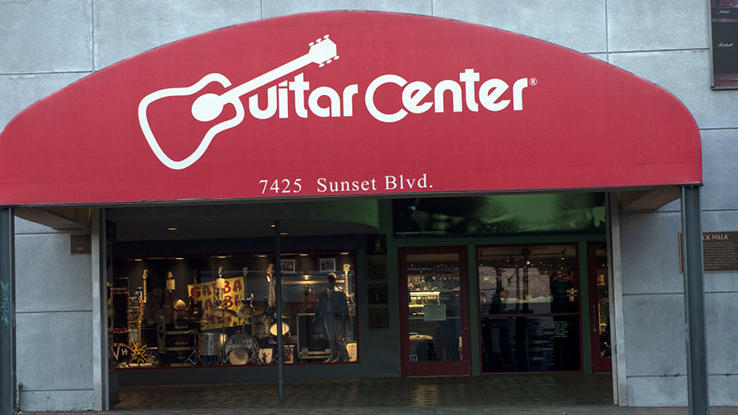
The instrument retailer planned to open new stores — despite its financial troubles — to try to right the ship, but those plans failed. The company managed to stave off closure by negotiating an emergency loan. Former Executive Vice President of Merchandising Michael Amkreutz told Forbes in a recent interview that the company is still going strong while in transition, but then he left the company in June.
Southeastern Grocers
Southeastern Grocers, the owner of popular Winn-Dixie grocery stores, recently filed for Chapter 11 bankruptcy protection in an attempt to restructure its debt. The grocery company closed nearly 100 stores and lowered its debt by $600 million. Additionally, it hopes to turn things around by remodeling and rebranding stores that are still open.

Southeastern Grocers also operates Bi-Lo, which has been struggling to compete against big-box retailers such as Target and Walmart as well as e-commerce powerhouses like Amazon. The company is based in Florida and operates in most southern states, including Alabama, Mississippi, Georgia, Louisiana, North Carolina and South Carolina.
Nine West
Shoe retailer Nine West is saddled with $1.5 billion in debt, although attempts are currently being made to restructure it. Part of the restructuring includes selling portions of the company and filing for Chapter 11 bankruptcy protection. In an effort to save the company, Nine West sold the Easy Spirit brand and closed all but 25 of its retail stores.

Nine West Holdings will also shift its focus to other products, including clothing and jewelry, to expand its market share beyond shoes. A shift in popularity away from ballet flats, heels and sandals in recent years has affected Nine West’s sales, and this change in consumer interest has Nine West refocusing.
Kohl’s
Kohl’s Corporation recently decided to close four stores in Los Angeles, Kansas and New York. The company also announced it would consolidate three of its major operation centers into two locations. One major trend the department store noticed was that its lowest-performing locations were the stores located inside or near malls.
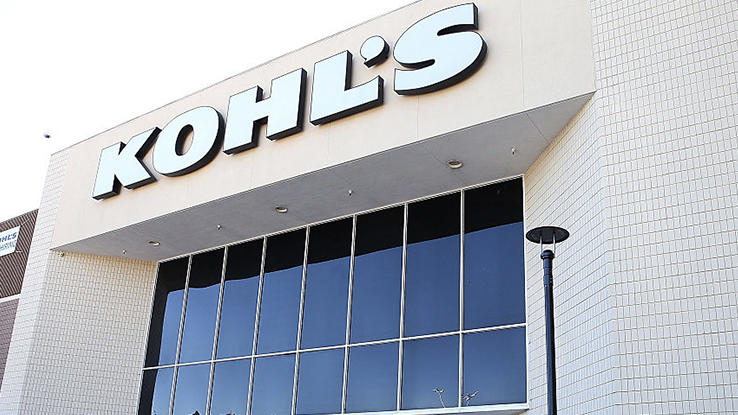
Kohl’s also noted that the best performing stores are the smaller locations. These smaller stores are one-sixth the size of the average Kohl’s location, so the company is hoping that closing some larger locations and focusing on the company’s smaller stores can help change the trajectory for the retailer.
Bon-Ton
Bon-Ton has been in business for more than 100 years, an impressive feat for any retail business. Carson’s, Boston Store and Boscov’s are also part of the Bon-Ton brand of companies. In 2018, Bon-Ton filed for bankruptcy, and the company was sold and liquidated.

However, in the fall of 2018, the new owner relaunched the company’s e-commerce site and announced plans to open select stores in the future. The newly refocused Bon-Ton is sleeker and streamlined for e-commerce. In the 1990s and 2000s, Bon-Ton enjoyed extensive popularity as a major department store, thriving in small towns with very little competition. With the growth of Amazon and e-commerce in the past decade, critical changes were necessary for the company.
David’s Bridal
David’s Bridal has been a staple in the bridal industry for years, but current trends have brides opting for more casual, less expensive weddings. As a result, stores like David’s Bridal have felt the financial pinch. In 2019, the company has a $520 million loan due, followed by another $270 million due in 2020 in unsecured notes.
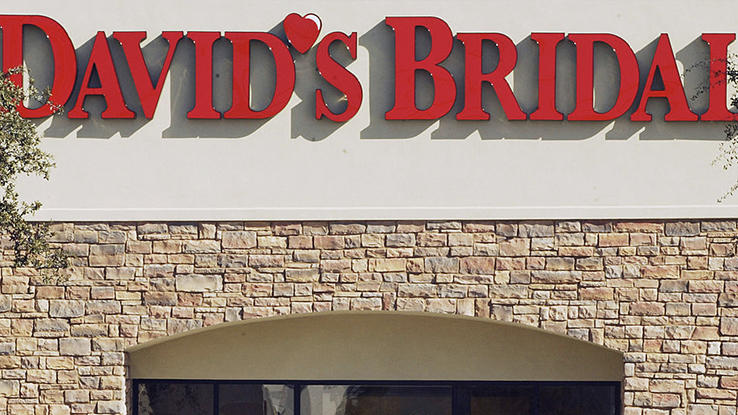
David’s Bridal’s new CEO, Scott Key, plans to do some debt refinancing to save the wedding superstore — at least for now. To add to the company’s struggle, S&P Global downgraded its credit rating in June of 2018. The company has an uphill battle to maintain sales in the coming years.
Tops Friendly Markets
This East Coast grocery chain has had its share of hard times in recent years. Grocery consumer habits are changing, and Tops has failed to keep up. Modern consumers are gravitating to smaller, specialty grocers and non-traditional food retailers in increasing numbers.

Tops failed to meet consumer demands and struggled with competition and falling food prices. The company filed for Chapter 11 bankruptcy, which released it from the $80 million in annual interest payments that were due in 2017. Stores for the grocery chain remain open in Vermont, New York and Pennsylvania for now while the company continues to work to improve sales.
Cole Haan
USA Today listed Cole Haan as one of the companies most at risk in 2018. That’s certainly not the way you want your company to make headlines in USA Today. In terms of shoes, the luxury brand is trying to refocus its branding away from dress shoes to sneakers. As consumer preferences have shifted, Cole Haan has struggled to keep up.

Cole Haan was previously owned by Nike, but the athletic company sold it to Apax Partners in 2013. As a result of the sale, the company lost the right to use Nike’s comfort technology, which built sneaker comfort into the brand’s dress shoes. Now that Cole Haan is doing this on its own and competing with its former owner in the athletic shoe space, the brand isn’t doing so well.
Charlotte Russe
Women’s apparel company Charlotte Russe rang in 2019 by filing for bankruptcy protection. The company planned to close 94 of its retail stores in February 2019 when it originally filed for bankruptcy. Since that time, it has been announced that Charlotte Russe will now close all 500 retail stores in the United States.

This change in plans for Charlotte Russe occurred when a business liquidator purchased the company in an auction in bankruptcy court. Charlotte Russe stores have almost always been housed in malls. The apparel chain lost market share and failed to keep up with consumer demands, which could have been caused by a decline in mall traffic as well as a shift in consumer interest.
Claire’s
The accessory store Claire’s is a staple in many childhood memories. This mall standard was where millions of young people would flock to get their ears pierced and buy colorful, inexpensive jewelry and accessories. Claire’s decline is likely due to dwindling mall traffic and oversaturation.
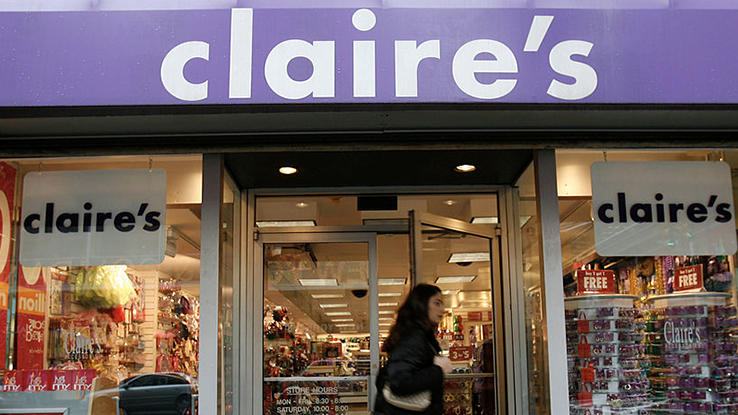
Unfortunately for young people everywhere, the store that was first founded in 1961 has pulled out of its IPO. In March of 2018, the company filed for Chapter 11 bankruptcy. Claire’s planned to reduce its $1.9 billion in debt by closing 130 stores. Now, the company plans to market itself to potential investors and buyers in the coming year.
FullBeauty Brands Holdings Corp
FullBeauty is a retailer for plus-size women and men. It owns various other brands, such as Woman Within, Jessica London, Ellos, KingSize, Roaman’s and Brylane Home, in addition to its e-commerce sites. E-commerce giant Amazon has been blamed for the company’s financial problems and declining sales.

Apax Partners now owns Fullbeauty Brands. In a 2017 year-end statement, the company reported a 30% drop in earnings in the first quarter of the fiscal year. In 2018, the company saw an executive revamp, with Bob Riesbeck named Chief Financial Officer, Robert Lepere named Chief People Officer and Liz White named Chief Customer Officer.
Eddie Bauer
In 2017, Bellevue-based outdoor company Eddie Bauer faced some major problems. Golden State Capital, the company’s owners, considered a sale in order to pay down its debts. This is one of the many strategies Golden State Capital has tried to revive Eddie Bauer. S&P Global also downgraded Eddie Bauer’s credit rating in 2017.

The company is no stranger to tough times. In 2009, with help from the sale to Golden State Capital, Eddie Bauer emerged from bankruptcy. However, the brand has struggled in recent years to keep up with trends. The company is currently in talks with Pacific Sunwear of California about a potential merger that could help save the brand.
Bluestem Brands
Bluestem Brands is a major retailer with 13 e-commerce sites in its portfolio. The company’s brands include Appleseed’s, Draper’s & Damon’s, Fingerhut, Blair and Gettington. Due to decreasing sales, Bluestem Brands has been on the chopping block in recent years.

In 2017, Bluestem reported a 10.9% decrease in net sales compared to the first quarter of the fiscal year 2017. Net sales in 2017 were $381.1 million, with adjusted net sales down 5.1% compared to the first quarter of 2017. This dip isn’t a promising sign of things to come, but only time will tell if Bluestem Brands and its e-commerce portfolio can remain afloat in the coming years.
PetSmart
With more than 1,500 stores in the United States, Puerto Rico and Canada, pet goods retailer PetSmart is currently undergoing a restructure. In June of 2018, advisors for the company decided to tackle the $8 billion debt problem it has been facing. The company won’t see debt maturities until 2022; however, PetSmart needs to solve the root of the problem — mainly declining sales — sooner rather than later.
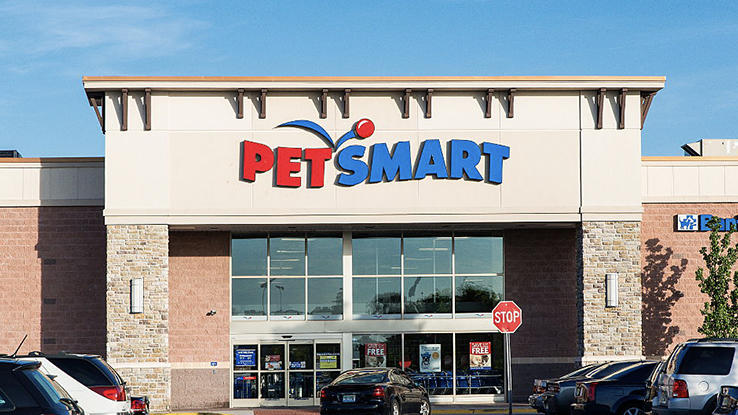
PetSmart has faced similar problems as most big-box retailers during the consumer shift to lower-priced online retailers. To help with this problem, the company purchased the e-commerce powerhouse Chewy for $3.35 billion, but doing so added to its existing debt.





